Get Around the Half Dome Permit System with these 7 Alternate Options
Table of Contents
Update Summer 2020: In light of the global COVID-19 pandemic, Yosemite has instituted a reservation system for all park entrances. This system is to reduce vehicle and human traffic, thereby lowering the risk of virus transmission within the park. All vehicle traffic entering Yosemite must secure a permit ahead of time, or else they will be turned away at the gate. Any visitor in the park found without a permit will be subject to a heavy fine.
Entrance Reservations can be made at the official Yosemite National Park website.
Full Disclosure: My clickbait-y title isn’t totally accurate. Many of the methods in this article require a hiking permit. These are just ways to secure a Half Dome Permit without going through the Lottery System. Other ways (like hiking at night, or rock climbing) do not require a permit.
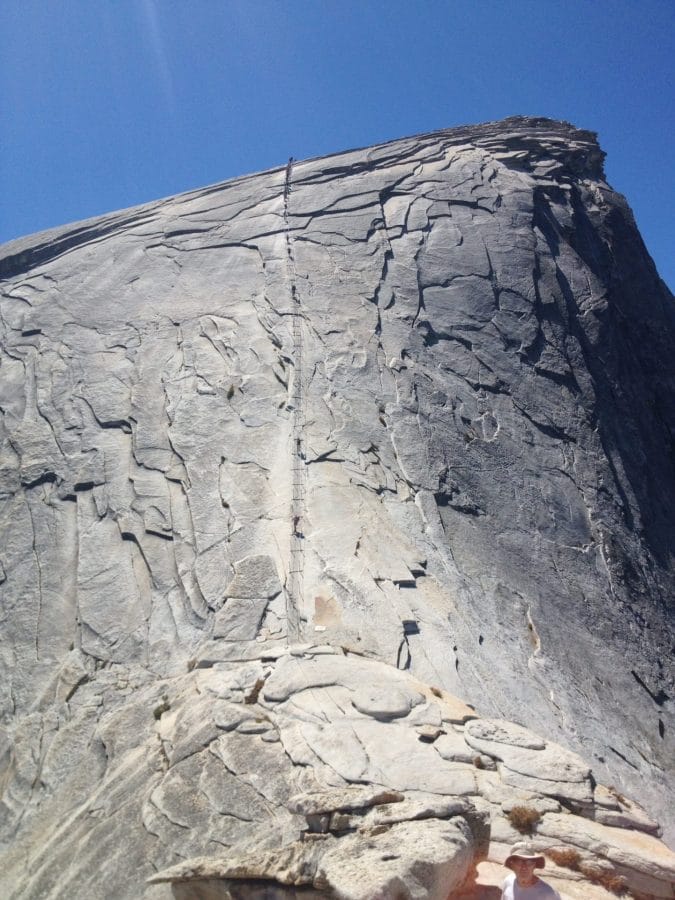
Easily a top contender for the most famous day hike in the world, Yosemite’s iconic Half Dome is the crown jewel hike of the National Park system. A grueling 6 mile hike through beautiful wilderness culminates with an unforgettable climb up the Half Dome Cables. For all of their hard work, hikers are rewarded the chance to stand atop the face of Half Dome, and gaze across a panoramic view of Yosemite National Park.
As one might imagine, such a popular trail sees a lot of human impact. Litter, erosion, and crowding on the narrow cables route have forced the National Park Service to institute a day hiking permit system. In order to climb half dome, hikers must enter a lottery system, vying for one of a limited number of permits. If you don’t get picked, then your chance to climb Half Dome must wait for the next season. Or Does It?
Actually, it is possible to hike half dome without a permit. I’ve hiked Half Dome four separate times, and I’ve never once had to use a standard Half Dome Permit. If you really want to get up Half Dome, then you totally can. In fact, I can think of 7 different ways to climb Half Dome without a traditional Permit.
Looking for New Hiking Gear?
Then we’ve got the gear for you! Click the banner below to see our all time highest rated Hiking Gear. This is the gear that we never go hiking without, whether we’re tackling Half Dome, or taking a pleasant walk in the meadow.
1. Ask for an Open Spot
This method is the most common way to get up Half Dome without a permit. Even though permit reservations are often made months in advance, many would be hikers end up missing their reserved day. The result is that many spots open up, ripe for the taking.
Rather than letting extra spots go to waste, the National Park Service would rather see the quota filled. With some luck, you can snag an open spot.
Simply walk up to the ranger, and ask if you can hike to the top. If there are spots available, they will often allow you to climb up the cables. It’s worked for me twice now, and I’ll probably try it again in the future. This method of hiking Half Dome has a proven track record. The one downside is that you have to hike all the way up to the base of the subdome to find out if you can score a spot on the cables or not.
Pro-tip: More hiking spots will be available if you take your hike on a weekday.
Pros: You don’t have to worry about entering any lotteries, and you can choose your ideal day.
Cons: There is no guarantee that you will be allowed to hike, particularly on holidays and weekends.
2. Enter the Daily Lottery
Though the main lottery for Half Dome opens up months in advance of the season, the National Park Service does hold daily permit lotteries. With luck, you can score one of roughly 50 daily permits that are doled out each day.
If you didn’t get your chance with the main lottery, the daily option may be your next best choice.
To apply for a daily permit, your application must be entered 48 hours prior to your planned hike. The number of available daily permits varies, and is based on the amount of cancellations and estimated amount of hikers for the day. To enter the daily lottery, apply at the Half Dome Permit Lottery page.
Pros: Allows you more flexibility in planning, and winning the lottery guarantees you a spot.
Cons: Again, there is no guarantee that you’ll be able to secure a permit.
3. Hike Half Dome at Night
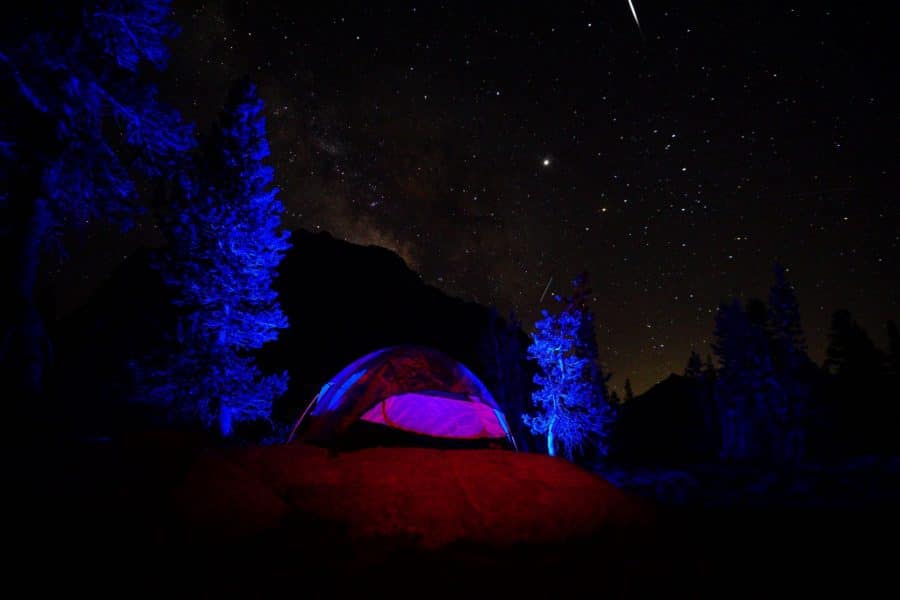
Yosemite may be one of the most popular national parks, but even the Rangers need to sleep. When the day grows long, and the sun dips low, the ranger (or SCA intern, Yosemite Conservancy Volunteer, whatever) at the Half Dome trail packs up their bags, and hikes off to bed.
At night, the path to the summit lies completely open, allowing you a solid 12 hours to hike the Half Dome cables, permit free.
Hiking at night might seem daunting to some, but I can assure you that it is just as enjoyable and challenging as hiking during the day. The only difference is that there is now a sky full of stars overhead.
I’ve never attempted to hike Half Dome in this manner, but I know of many who have. The main pitfall that I foresee comes during the Cables section. It will be harder to see the hand rails, and thus potentially more dangerous. However, with a good, bright headlamp, and maybe a climbing harness, your risk will be greatly lowered.
However, I think the best benefit of this option is bragging rights. Not many can claim that they climbed the whole cables route under the cover of darkness.
Pro Tip: Consider taking your night hike during a Full Moon. Yosemite’s slick, glacier polished granite reflects moonlight like a mirror. It is safer, and dare I say it, more romantic.
Night Hiking presents a set of challenges unique from those of day hiking. To maximize your fun, while reducing risk, take these into consideration:
- Always tell someone where you are going, and what time you expect to be back.
- Wear reflective clothing. If you get lost, reflective clothing will make it easier for others to spot you.
- Always bring a backup light source, in addition to your main one.
- Use a red light to protect the night vision of yourself, and others.
- Consider Hiking Under a Bright Moon. The Moon can be an excellent natural light source.
- Use Trekking Poles for Increased Stability, particularly on trails that may have hidden tripping hazards.
- Oh yeah, and leave your bluetooth speaker at home.
Pros: You get the whole trail to yourself, and the chance to see an incredible night sky from atop Half Dome.
Cons: Climbing the cables may be more challenging in the dark. Use Caution.
Before you get any ideas-NO, you cannot camp on Half Dome, or the Subdome.
4. Hike When the Cables are Down
Warning: This Option is Extremely Dangerous. Use with extreme caution.
The riskiest way to hike Half Dome is to make the trek during the off season. While the prime Half Dome hiking season sees thousands of hikers, you can circumvent these crowds by hiking while the cables are down.
Rather than removing the Half Dome Cables entirely, the Park Service only takes down the metal posts. The Cables remain throughout the off season, albeit lying against the rock surface. It is still possible to use the cables to aid your climb, but without the supportive help of the posts.
However, even with a harness, hiking Half Dome when the cables are down is still very risky. Without the help of the posts and planks to rest on, many hikers may feel intimidated by the climb. Hike at your own risk.
The key is to catch a clear weather window during the off season. A window when the Mist Trail isn’t choked with snow, and when slick ice doesn’t cover Half Dome’s summit. I only recommend this method as a last resort, if you’re really desperate to climb Half Dome. Hiking Half Dome without Cables more closely resembles rock climbing than it does Hiking. Remember, if you go up the Cables, you have to come down them too!
If you feel that you really must pursue this option, use a climbing harness, with friction hitches to attach to the cables. Properly used, these can help prevent a fall.
Pros: Few, if any.
Cons: Hiking Half Dome with the Cables Down is extremely dangerous. I don’t recommend this option.
5. Go Backpacking!
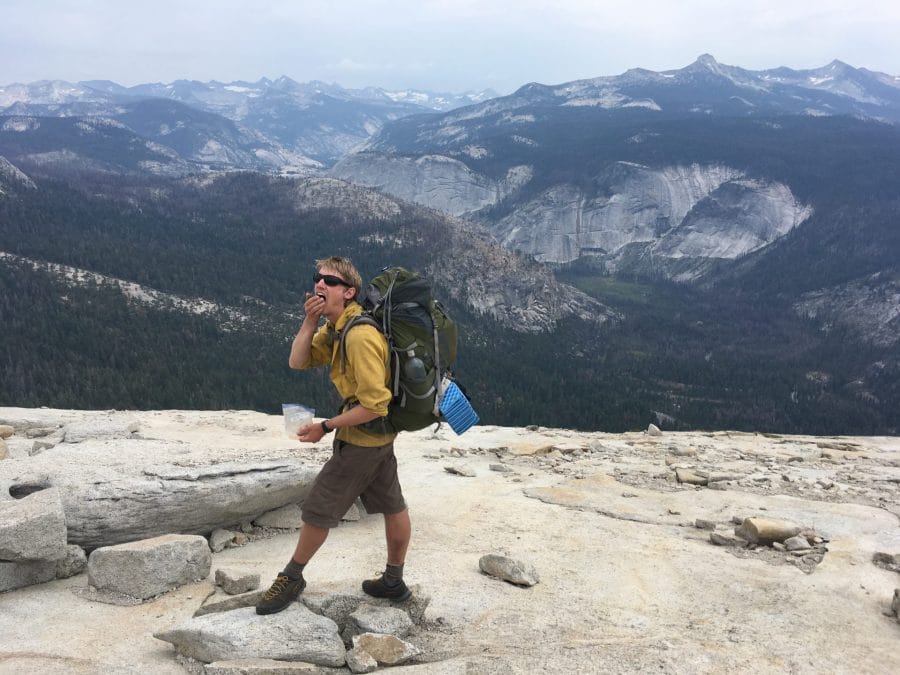
Half the fun of hiking Half Dome is the challenge of doing it all in one day. With a 16 mile out and back hike, getting up and down Half Dome is no easy task. It’s widely regarded as one of the hardest hikes in Yosemite, in fact.
But, instead of feeling pressed to hike Half Dome, you can take a load off by adding your climb to a Yosemite backpacking itinerary. Spend a few days and nights exploring the Yosemite Wilderness, and then summit Half Dome to cap off the whole trip. It’s a good way to experience Yosemite in a way that many other hikers do not.
When applying for a wilderness permit, it is possible to add on a Half Dome permit as well. The National Park Service allows up to 75 Half Dome backpacking permits per day. 50 permits are available in advance, and 25 are available on a first come, first serve basis at wilderness centers. Each wilderness permit costs $5, with an additional $5 fee per person. An additional Half Dome permit costs $10. Wilderness permits are available up to 24 weeks in advance, to two days before your hike.
All you need to do is specify your desire to hike Half Dome, when applying for your wilderness permit. If permits are available, and your hike takes you near Half Dome, a permit will be granted. Your permit will be good for a Half Dome admission for every day of your trip.
Wilderness Permits issued outside of Yosemite are not valid to hike Half Dome. For a time, it was possible to attach a Half Dome permit onto certain John Muir Trail permits. In 2017, at the end of my Thru Hike, I capped it off three weeks of wilderness adventure by summiting Half Dome. I guess they’ve closed this loophole, but if you ever get the chance to hike the John Muir Trail, take full advantage of it. It’s life changing.
If you do decide to go backpacking, keep these things in mind:
- You are required to hike with a bear can. Bear Cans are important, as they protect both your food, and the bears. Place your bear can at least a hundred feet from where you will be sleeping, and cooking.
- In the summer, conditions can be hot as heck during the day, and near freezing at night (especially in Tuolumne). Pack accordingly.
- Snow Travel may be required.
- Alpine afternoon thunderstorms are common.
- Creek Crossings may be hazardous, particularly in high snow years.
- Camp far off from any trail, or water source.
- Mosquitoes are common and abundant.
Pros: Backpacking in Yosemite is an incredible way to experience the beautiful wilderness of the park.
Cons: After hiking and sleeping in the dirt for several days, all of the other hikers will be able to smell you from half a mile off.
6. Consider Hiking Cloud’s Rest Instead
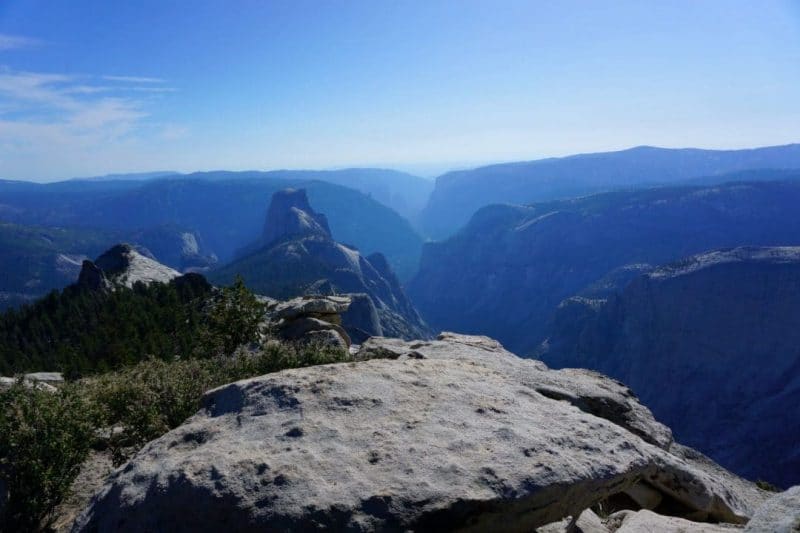
Half Dome is a great, incredibly memorable trail. an awesome achievement for any hiker. But honestly, Yosemite has better hikes-hikes that are longer, harder, with better views, and smaller crowds. My favorite such trail is Clouds Rest, located just a few miles away from Half Dome.
Cloud’s Rest is like Half Dome’s quieter, more mature big sibling. Half Dome may hog the limelight, but Cloud’s Rest sits quietly in the background, confident in it’s splendor.
A huge, glacier carved peak, Cloud’s Rest sits high above Tenaya Canyon. If you’re standing on the valley floor, Cloud’s Rest can be spotted on the ridge to the left, and behind Half Dome. From this view, Cloud’s Rest doesn’t look like much. Take the time to make the ten mile hike, though, and you’ll find that it commands an incredible trekking objective.
Cloud’s Rest Quick Stats
Distance: 19.8 Miles Out and Back
Elevation Gain: 5,300 feet.
Trailhead: Happy Isles
Difficulty: Extreme
Cloud’s Rest may not provide the same legendary experience as fostered in climbing the Half Dome Cables, but it more than makes up for it in views, challenge and remoteness.
The trail to Cloud’s Rest starts just as Half Dome does, starting at Happy Isles, climbing the Mist Trail, passing through Little Yosemite Valley. Instead of splitting off to Half Dome, hikers continue on the John Muir Trail, following the signs for Cloud’s Rest.
After seemingly endless switchbacking and hill climbing, you emerge into a treeless summit. This is the alpine pinnacle of Cloud’s Rest.
Cloud’s Rest sees only a fraction of Half Dome’s crowds, making it a better hike for that reason alone. Cloud’s Rest can alternately be hiked from Tenaya Lake, just off of Highway 120. I have never attempted this route, but I am assured that it is just as enjoyable as if starting from Yosemite Valley.
Pros: No Permits Needed, and you get a better view!
Cons: If starting from Happy Isles, the hike to Cloud’s Rest is much more challenging than Half Dome.
7. Bonus: Go Rock Climbing
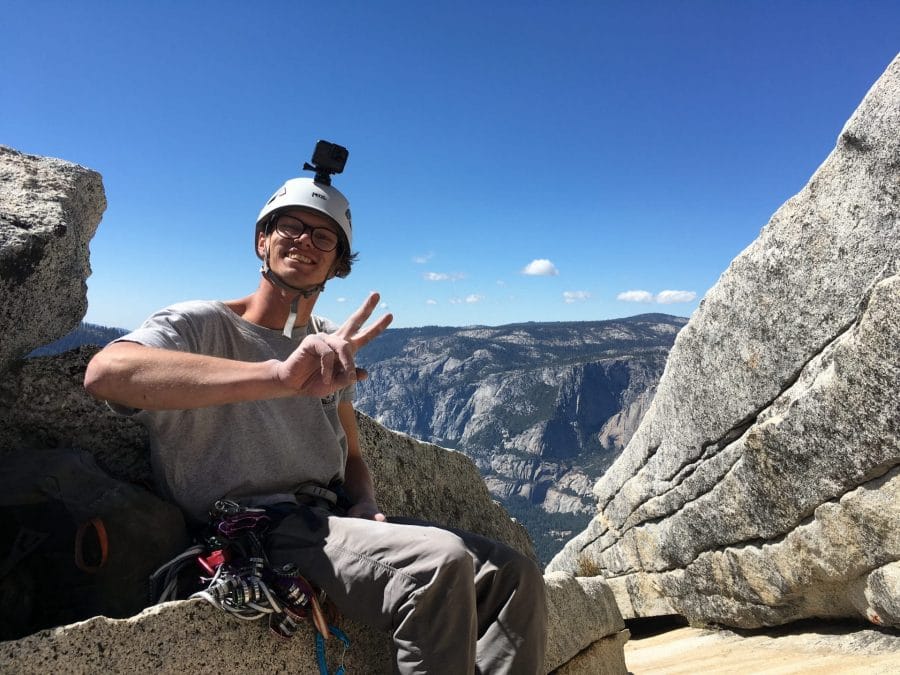
Disclaimer: Rock Climbing is a dangerous activity. Do not attempt to go rock climbing without the necessary training, experience, and confidence to both climb, and descend safely. Hike the Planet does not advocate climbing on Half Dome. We are only pointing it out as an option.
Half Dome, being one of the world’s most sought after day hikes, is equally prized among rock climbers. Every year, hundreds of climbers scale the vertical walls of Half Dome, testing their fitness and mettle high above Yosemite Valley.
The most challenging routes is via Half Dome’s famous Northwest Face. Employing complicated Aid Climbing systems, climbing parties sometimes take 2-3 days to ascend the face. This style of climbing is a challenging, highly technical, yet rewarding endeavor.
However, a much more accessible route exists. Deemed Snake Dike, a low angle, highly featured path travels straight up the western slope of half dome.
I found Snake Dike to be very similar to the cables route. Both routes ascend a similar angle of slope, except Snake Dike is several times the length, and there are no cables to hang onto. Rather, you must fully trust in yourself, your gear, and your partner to climb Snake Dike.
Snake Dike is one of Yosemite’s most popular climbing routes. It’s relatively easy to climb, the biggest challenge being the massive cross country hike required to reach the beginning of the route. It’s been nicknamed Snake Hike for a reason.
Yosemite has long been the “center of the world” for many in the rock climbing community. If you’ve never tried rock climbing, I highly recommend it. It is a sport that has proven to be incredibly constructive and life affirming.
But, don’t expect to pick up a rope, and climb Half Dome on your first day. Climbing is a dangerous activity-one that requires great care and experience to perform safely. Start off small. Learn how to climb in a gym, and then move onto some of Yosemite’s smaller rock climbing cliffs. Find other climbers that know what they’re doing, and learn from them.
Alternatively, consider hiring a climbing guide. The Yosemite Mountaineering School, located in Curry Village, offers both educational rock climbing classes, and guided climbing services. With the help of a trained rock climbing guide, you can “learn the ropes”, and use that knowledge to climb Half Dome.
Pros: You get to experience Half Dome in a way that few other people do.
Cons: You may develop a seriously expensive addiction to Rock Climbing.
Conclusion
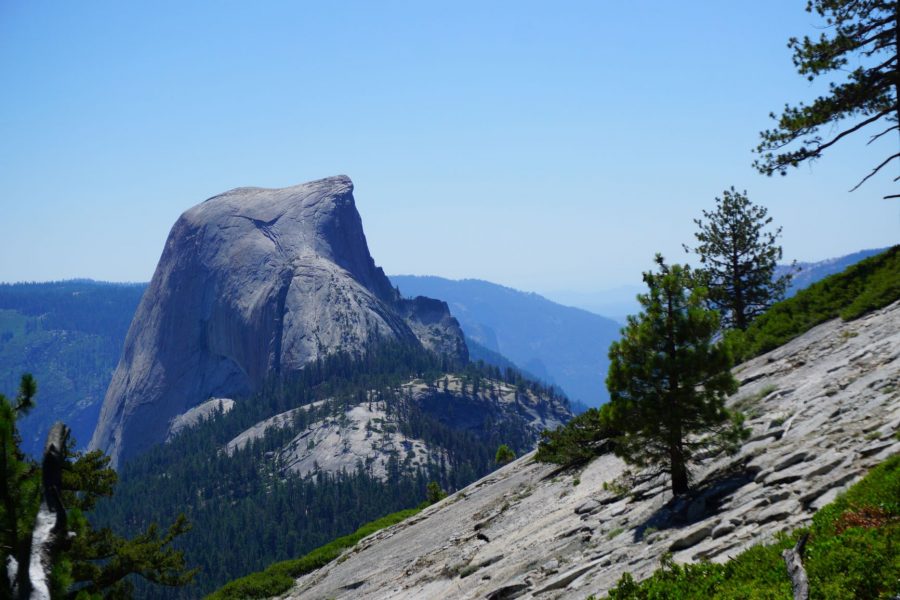
It is possible to sneak around Half Dome’s permit system.If you really want to hike Half Dome, you can. I’ve laid out seven options, and I’ve personally used three of them to climb Half Dome. Hikers more clever than I can figure out other ways, I’m sure.
That said, the permit system exists for a reason. The hiker impact on the Half Dome trail is immense, and the permit system has made the issue all the more manageable. That is why I only recommend pursuing these options if you can’t win a spot in the lottery. The last thing we need is overcrowding on the Half Dome trail.
Happy Hiking!
- The Best Campsites Around Big Bear California - February 26, 2021
- Hiking to the Hollywood Sign Via the Brush Canyon Trail - July 13, 2020
- Dirt Cheap Hiking and Backpacking Gear: The Most Affordable Gear on the Internet - July 4, 2020


2 thoughts on “Half Dome Without a Permit: 7 Alternate Ways to Hike Half Dome”
Comments are closed.